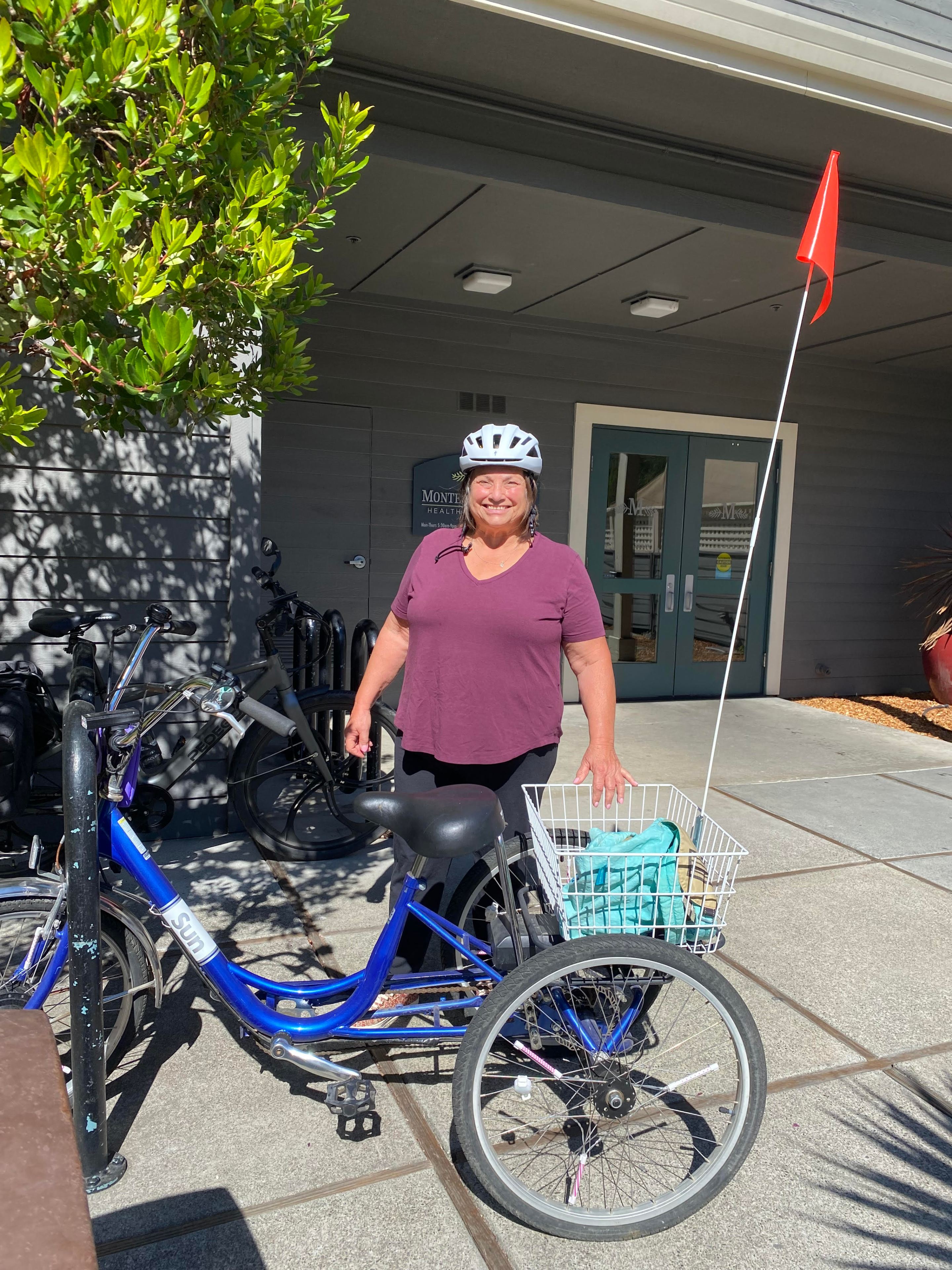And thus concludes the adventures of Abby Arnold in her Week Without Driving in Santa Monica. You can read her preview here, follow her E-Trike journey here, discover what she discovered on two feet here, ride with her into San Francisco on a SMART Train/Ferry trip, or take a trip on the Santa Rosa City Bus.
Two observations by others were important in motivating me to become an anti-car activist.
Years ago, an architect friend noted that “the city requires you to build a bedroom for your car before you can build a bedroom for your child.” Then a few weeks ago, Santa Rosa City Councilmember Victoria Fleming observed that the huge amount of public land that is devoted to streets is reserved and privileged for automobiles.
Around that same time I learned about the Week Without Driving, a public awareness campaign to get us to think about everyone who does not drive, especially those who are living with disabilities, those who are too young or too old to drive, and those who cannot afford a car. Being a driver is a cultural, physical, and economic privilege.
Access to the world beyond one’s door without having the privilege of driving is an equity issue. Each day that I got where I was going without a car I encountered barriers to safe travel.
Biking: I used my age-appropriate tricycle and quickly discovered that a line on the side of the street is not adequate to let me feel safe riding on a moderately busy street. The streets are not smooth at the edges, and they have many hazards (trash, branches, leaves) for bicycles. I got hit in the head by branches of untrimmed trees. I ended up riding on the sidewalk, which was just barely wide enough to accommodate my trike. I encountered almost zero pedestrians, which illustrates how few people use their foot power to get from place to place. Bike racks are hard to find, and are often in inconvenient hideaways.
Walking: “Where the Sidewalk Ends”, the Shel Silverstein children’s book, became the theme of my walking experience. My local mall, the Kaiser Health Center campus, and the areas around both the Santa Rosa and Larkspur stations for the SMART train lack sidewalks. What should be the sidewalk next to the Santa Rosa train station is used to park cars. People connecting in Larkspur from the train to the ferry have to walk on a bike path. What is preventing planners from considering how people get to and from their location?
Bus: Customer service needs to be one of the most important goals of any public conveyance. The Santa Rosa City Bus is the best I’ve ever encountered when it comes to driver and staff attitudes and service. Every driver I rode with was helpful and friendly. Several drivers got out from behind the wheel to help riders get aboard. They were happy to give me information and make suggestions about how best to navigate next steps to my destination. When a couple with a complicated baby stroller did not know how to properly make the stroller and baby safe during the ride, the driver very kindly assisted them. Perhaps it is just the bad experiences I’ve had with the LAX shuttle system and the Santa Monica Big Blue Bus, but I am in awe of the Santa Rosa City Bus drivers and station staff members who clearly love helping people. I had trouble finding the routes and schedule I needed using both the online portal and a printed map/schedule, and this should be improved.
Train and ferry: Both the SMART train and the Larkspur Ferry are efficient, pleasant, clean, and cheerful. Both systems are well-staffed with friendly and helpful people. The SMART train is currently free for people under 18 and over 65, with advocacy needed to extend the fare pause beyond its current pilot period and possibly permanently. The connection from the train to the ferry needs attention. The walk in Larkspur is challenging for all but the most physically fit, and the pedestrian route is not clear. I can testify that the SMART train is a good place to make a new friend!
I brought these observations and recommendations to a community meeting in Santa Rosa on Saturday, when we had a chance to interact with policymakers and start organizing for improvements. I’ll report on that meeting in Wednesday’s final post.






